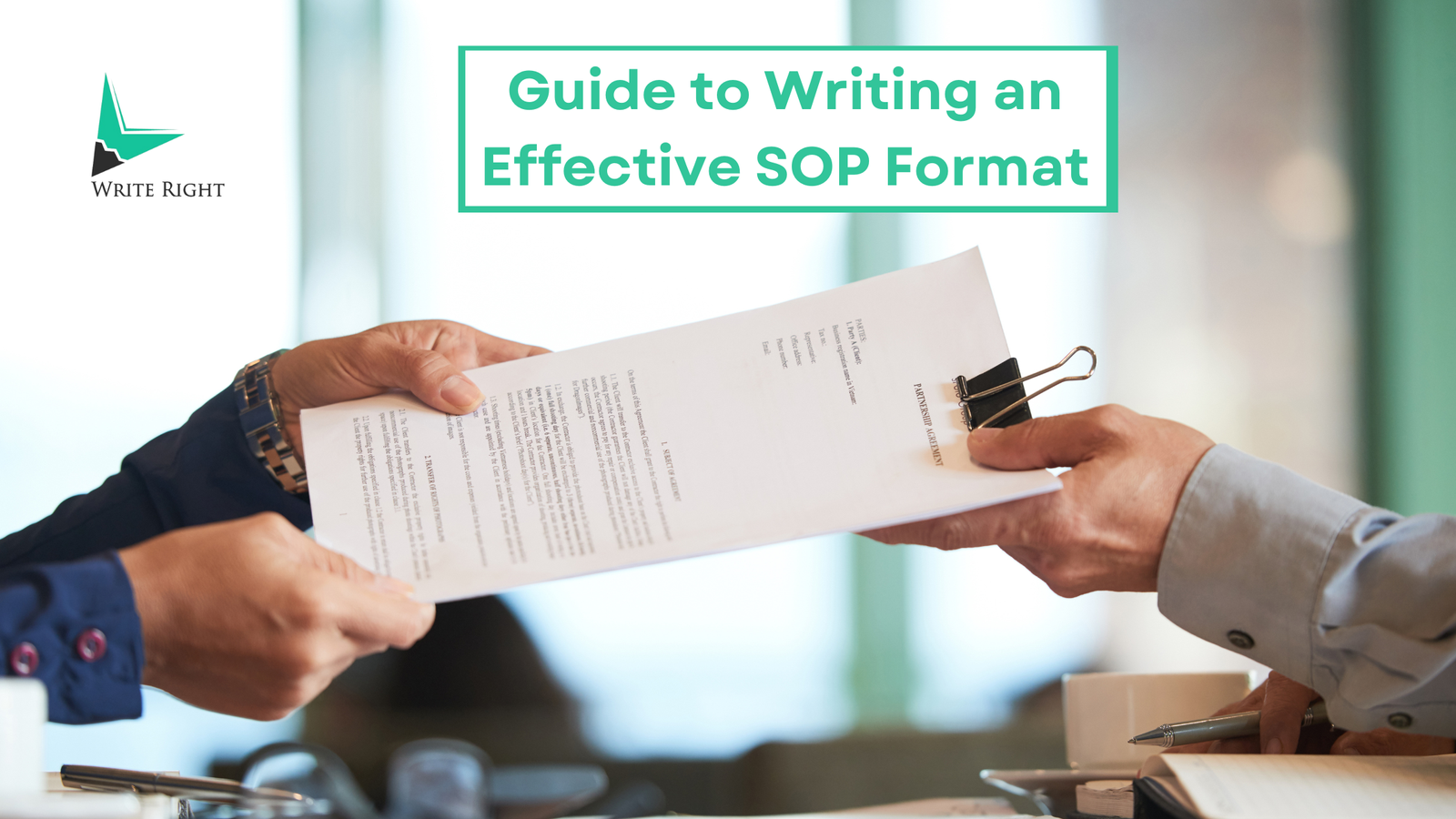Introduction to Statement of Purpose Format (SOP Format)
A Statement of Purpose (SOP) is your academic narrative that communicates your career trajectory, aspirations, and motivations to university admissions committees. Unlike a resume, which provides a brief look at your academic and professional achievements, an SOP offers a compelling narrative that highlights your unique personal and professional journey, explaining why you are a perfect fit for your chosen program. This guide will take you through the various elements of an effective SOP Format, providing you with the knowledge and tools to craft a powerful statement that stands out.
| Section | Description |
|---|---|
| Introduction to SOP | The SOP is described as an academic narrative that goes beyond a resume by providing a more detailed and personal narrative of your academic and career journey, focusing on aspirations and motivations. |
| Essential Components | The blog outlines key components to include in an SOP, such as a Personal Introduction, Academic Background, Professional Experience, Research Interests, and Career Goals. Each element helps construct a comprehensive narrative. |
| SOP Formats and Templates | It discusses the importance of having a clear structure in an SOP and the need for tailoring each SOP to individual applications, highlighting the importance of understanding cultural nuances and expectations of academic institutions. |
| Writing Guidelines | Provides guidelines on the appropriate language and tone for an SOP, suggesting a professional yet engaging tone and advising on organizing information logically and cohesively. |
| SOP Samples | Offers samples of SOPs for various courses and countries, demonstrating how to adjust tone and content according to the specific program and location, thus personalizing each SOP effectively. |
| Dos and Don’ts | Provides practical advice on what to include and what to avoid in an SOP. Emphasizes tailoring content, offering deep insights into experiences, and ensuring the SOP complements other application documents. |
| Importance of SOP | Explains the significance of the SOP in the application process, emphasizing its role in making a personal connection with the admissions committee and showcasing the applicant’s fit for the program. |
| FAQs about SOP | Answers common questions about SOPs, covering their purpose, importance, structure, and customization, thus providing a thorough understanding of how to approach SOP writing effectively. |
Essential Components of an SOP Format
Personal Introduction:
Start your SOP formatting with a personal touch by introducing yourself in a way that captures your individuality and enthusiasm. Share an anecdote or insight that reveals your passion and drives for your field of study, setting the stage for the detailed academic and professional journey that follows.
Academic Background:
Detail your academic journey with a focus on experiences and achievements pertinent to the program you’re applying to. Emphasize any significant projects, papers, or studies you’ve undertaken and explain how they have prepared you for the challenges of the program.
Professional Experience:
If applicable, outline your work experience, emphasizing roles and projects relevant to your academic interests. Highlight skills and knowledge you’ve gained that will be advantageous in your proposed studies.
Research Interests:
For candidates applying to research-intensive programs, it’s crucial to articulate your research interests. Describe any research initiatives you’ve engaged in and discuss how they align with the goals of the program and the faculty’s expertise.
Career Goals:
Conclude this section by clearly stating your career objectives. Explain how the program is a stepping stone to achieving your professional goals and how you plan to contribute to your field post-graduation.
SOP Formats and Templates
Basic Structure:
An effective SOP Format follows a clear structure: an engaging introduction, detailed body paragraphs covering academic and professional backgrounds, and a strong conclusion reiterating career goals and fit with the program.
Tailored SOPs:
Customize your SOP Format for each application. If applying abroad, consider the cultural nuances and expectations of each country. For instance, U.S. universities might prefer a more personal and less formal narrative compared to European institutions.
Visual Examples:
Include a couple of example paragraphs that demonstrate different approaches—one for a technical program and another for a liberal arts program. This shows how the tone and focus might shift depending on the audience and subject matter.
Writing Guidelines for Effective SOPs
Language and Tone:
Use a professional yet engaging tone, employing precise language that communicates your enthusiasm without being overly casual. Make sure your SOP is free of jargon unless it’s widely understood in your field.
Flow of Information:
Organize your SOP Format logically—begin with your past (academic background), move into the present (current interests and work), and conclude with the future (career goals). Ensure each part naturally leads into the next, maintaining a cohesive narrative throughout.
Highlighting USPs:
Stand out by highlighting unique selling points such as a particular expertise, a unique project you led, or an unusual path you took in your career. Show how these experiences make you an exceptional candidate for the program.
SOP Samples for Different Courses and Countries
Sample SOP for Engineering in USA – Part 1
“My fascination with renewable energy systems began with a childhood obsession with wind turbines. Growing up in a small town nestled between rolling hills, I spent countless hours watching the graceful rotation of the turbines, marveling at their ability to harness nature’s power. This early fascination evolved into a deep-seated passion for sustainable engineering solutions, leading me to pursue a Bachelor’s degree in Mechanical Engineering. Throughout my academic journey, I delved into courses on fluid dynamics, thermodynamics, and sustainable design, all while keeping a keen eye on advancements in renewable energy technologies. Now, as I embark on the next chapter of my academic and professional journey in the United States, I am eager to contribute to the forefront of renewable energy research and innovation, driven by my unwavering commitment to a greener, more sustainable future.” .. Click here to view an actual sample – Sample SOP for MS in US

Sample SOP for MBA in Canada – Part 1
“Leading a team during a market crisis taught me valuable lessons in resilience and innovation that I aim to bring to my studies at [University Name]. As a seasoned professional in the fast-paced world of finance, I’ve encountered my fair share of challenges. However, it was during the tumultuous times of the 2008 financial crisis that I truly honed my leadership skills. As the head of a cross-functional team tasked with navigating our company through uncertain waters, I learned firsthand the importance of adaptability, strategic decision-making, and effective communication. Despite the turbulence, our team emerged stronger and more cohesive, thanks to our collective resilience and innovative thinking. These experiences have fueled my desire to pursue an MBA, where I can further refine my leadership abilities and gain the strategic insights necessary to drive meaningful change in the global business landscape. I am particularly drawn to [University Name]’s reputation for fostering an entrepreneurial mindset and its commitment to diversity and inclusion, values that align closely with my own.” .. Click here to view an actual sample – Sample SOP for MBA in Canada

Sample SOP for Medicine in UK – Part 1
“From a young age, I’ve been captivated by the intricate workings of the human body and the profound impact that healthcare professionals can have on people’s lives. As a child, I would eagerly devour books on anatomy and physiology, fascinated by the complexities of biological systems. This passion only deepened as I pursued a Bachelor’s degree in Biology, where I had the opportunity to engage in hands-on research projects and volunteer at local hospitals. These experiences solidified my desire to pursue a career in medicine, where I can combine my love for science with my innate desire to help others. The esteemed medical programs in the United Kingdom, known for their rigorous academic curriculum and emphasis on practical clinical training, are the perfect fit for my aspirations. I am eager to immerse myself in the rich tradition of medical education in the UK, where I can develop the skills and knowledge necessary to make a meaningful difference in the lives of patients.” .. Click here to view an actual sample – Sample SOP for Masters in UK

Sample SOP for Computer Science in Australia – Part 1
“My journey into the world of computer science began with a single line of code and a boundless curiosity for technology. From programming simple games in my teenage years to developing complex software applications during my undergraduate studies, I’ve always been drawn to the endless possibilities that technology offers. With a Bachelor’s degree in Computer Engineering under my belt, I am now eager to take my passion for innovation to the next level through advanced studies in computer science. Australia’s vibrant tech scene and world-class universities provide the perfect environment for me to expand my knowledge and expertise in areas such as artificial intelligence, cybersecurity, and data science. I am particularly excited about the opportunity to collaborate with leading researchers and industry professionals, leveraging their insights to tackle real-world challenges and drive positive change through technology.” .. Click here to view an actual sample – Sample SOP for CS in Australia

Sample SOP for Environmental Studies in Germany – Part 1
“Growing up surrounded by the lush forests and crystal-clear lakes of my hometown, I developed a deep appreciation for the natural world and a keen awareness of the urgent need for environmental conservation. Inspired by this upbringing, I pursued a Bachelor’s degree in Environmental Science, where I explored topics ranging from ecology and conservation biology to sustainable development and environmental policy. Now, as I look towards furthering my education, Germany’s renowned programs in environmental studies stand out as the ideal destination for me. With its strong emphasis on interdisciplinary research and hands-on learning opportunities, Germany offers a unique platform for me to delve deeper into pressing environmental issues and contribute to innovative solutions. I am eager to join a community of like-minded individuals who share my passion for protecting the planet and shaping a more sustainable future for generations to come.” .. Click here to view an actual sample – Sample SOP for Engineering in Germany

Here’s a detailed expansion on the dos and don’ts of writing a Statement of Purpose (SOP):
Do: Tailor each SOP to the program and university:
Tailoring your SOP to the specific program and university demonstrates your genuine interest and understanding of what they offer. Research the program thoroughly and mention specific faculty members, resources, or aspects of the curriculum that attract you. For example, discuss how a particular professor’s research aligns with your interests or how a unique feature of the program, such as an internship opportunity or a specialized course, resonates with your academic and career goals. This shows the admissions committee that you’ve done your homework and that you’re genuinely excited about the prospect of studying at their institution.
Don’t: Repeat information found elsewhere in your application without providing additional context or insight:
Your SOP should complement your application by providing insights into who you are beyond what can be gleaned from your transcripts, CV, or letters of recommendation. Avoid simply rehashing information that’s already included in other parts of your application. Instead, use the SOP as an opportunity to provide context, expand on key experiences, and articulate how they have shaped your academic and professional journey. Share anecdotes, reflections, and personal insights that highlight your unique qualities, motivations, and aspirations. By offering fresh perspectives and deeper insights, you can engage the admissions committee and leave a lasting impression.
For instance, if your CV mentions your internship at a prestigious company, don’t just list your responsibilities. Instead, discuss how this experience influenced your career goals, what challenges you encountered, and how you overcame them. Similarly, if your transcripts show a strong academic record, don’t merely recount your grades. Instead, delve into your intellectual curiosity, academic interests, and the specific courses or projects that have inspired you. This approach allows you to present a more holistic and compelling portrait of yourself as a candidate, enhancing your chances of standing out in a competitive applicant pool.
Pointers to consider when writing your Statement of Purpose (SOP Format), presented in brief:
| Pointer | Description |
|---|---|
| Clarity and Conciseness | Keep your SOP focused and to the point, avoiding unnecessary details or tangents. Clearly articulate your goals, experiences, and motivations in a concise manner. |
| Structure and Organization | Use a clear and logical structure for your SOP, with an introduction, body paragraphs, and a conclusion. Ensure smooth transitions between sections to maintain coherence. |
| Authenticity | Be genuine and authentic in your writing, avoiding embellishments or exaggerations. Admissions committees value honesty and sincerity, so present yourself truthfully and transparently. |
| Relevance | Stay focused on the prompt and avoid including irrelevant information. Every detail should contribute to your overall narrative and support your candidacy for the program. |
| Proofreading and Editing | Thoroughly proofread your SOP for grammatical errors, typos, and inconsistencies. Consider seeking feedback from trusted peers, mentors, or professional editors to ensure clarity and polish. |
| Future Plans | Clearly outline your short-term and long-term goals, explaining how the program aligns with your aspirations and how it will help you achieve them. |
| Unique Perspective | Highlight what sets you apart from other applicants, whether it’s your background, experiences, skills, or perspectives. Emphasize your unique strengths and contributions. |
| Avoid Negativity | Maintain a positive and optimistic tone throughout your SOP, avoiding any negative remarks or criticisms. Focus on your achievements, aspirations, and potential contributions. |
| Specificity | Provide specific examples, details, and evidence to support your claims and assertions. Show, rather than tell, the admissions committee why you’re a strong candidate for the program. |
| Professionalism | Use professional language and formatting conventions in your SOP, including proper grammar, punctuation, and formatting. Present yourself in a manner that reflects maturity, professionalism, and respect for the admissions process. |
Importance of the Statement of Purpose Formats (SOP Format) in detail:
Your Statement of Purpose (SOP Format) is more than just a document; it’s your voice in the admissions process, your chance to speak directly to the admissions committee and convey who you are as a candidate beyond your grades and qualifications. Here’s why the SOP holds such significance:
Personal Connection: Your SOP provides a unique opportunity to connect with the admissions committee on a personal level. Unlike transcripts or test scores, which only offer a quantitative assessment of your academic abilities, the SOP allows you to share your story, motivations, and aspirations in your own words. By conveying your personality, passions, and values, you can forge a personal connection with the admissions committee, making your application more memorable and compelling.
Showcasing Fit: A well-crafted SOP with a great SOP Format enables you to demonstrate why you are an ideal fit for the program and institution to which you are applying. You can highlight how your academic background, professional experiences, and career goals align with the values, mission, and offerings of the program. By showcasing your understanding of the program’s strengths, resources, and opportunities, you can convince the admissions committee that you have carefully considered your choice of institution and are genuinely enthusiastic about the prospect of studying there.
Demonstrating Motivation: Admissions committees are interested in candidates who are not only academically qualified but also motivated and committed to their chosen field of study. Your SOP provides a platform to articulate your passion for your field, your reasons for pursuing further education, and your long-term aspirations. By sharing specific examples, anecdotes, and experiences that have shaped your academic and professional journey, you can demonstrate your genuine interest and dedication, setting yourself apart as a motivated and focused candidate.
Highlighting Strengths: Your SOP is an opportunity to showcase your strengths, achievements, and unique qualities in a more holistic manner. You can discuss your academic accomplishments, research experiences, leadership roles, extracurricular activities, and any challenges you’ve overcome. By providing concrete examples and evidence of your capabilities, you can paint a comprehensive picture of your potential as a student and future professional. This allows the admissions committee to assess not only your academic aptitude but also your resilience, creativity, and leadership potential.
Addressing Weaknesses: In addition to highlighting your strengths, your SOP can also be used to address any weaknesses or gaps in your application. Whether it’s a lower-than-average GPA, a career break, or a change in academic direction, you can use your SOP to provide context, explain mitigating factors, and demonstrate your readiness to succeed in the program despite any challenges you may have faced. By being honest and proactive in addressing potential concerns, you can reassure the admissions committee of your preparedness and resilience.
Word Limits and Adhering to Guidelines for SOP Formats
- Clarity and Focus: When adhering to word limits, prioritize clarity and focus in your writing. Choose your words carefully and avoid unnecessary verbosity. Each sentence should contribute directly to your narrative, conveying essential information or insights. Eliminate any extraneous details or tangents that do not directly support your main points. By maintaining clarity and focus, you can ensure that your SOP remains engaging and impactful within the confines of the word limit.
- Strategic Selection of Content: Given the limited space available, be strategic in selecting which achievements, experiences, and reflections to include in your SOP. Focus on those that are most relevant and impressive, aligning closely with the program’s requirements and your academic and career goals. Prioritize accomplishments that demonstrate your qualifications, motivations, and potential contributions to the field. By showcasing your most significant achievements and reflections, you can make the most effective use of the limited word count and leave a lasting impression on the admissions committee.
- Efficient Use of Language: Optimize your language usage to convey maximum meaning in minimal words. Use concise and precise language to express your ideas and convey your message effectively. Avoid redundant phrases, clichés, or unnecessary qualifiers that can inflate your word count without adding substance. Instead, opt for clear and direct language that gets straight to the point. Consider using active voice, strong verbs, and descriptive language to create impact and engage the reader without relying on unnecessary verbosity.
- Adapting Length to Guidelines: Different institutions may have varying word limits for SOPs, ranging from a few hundred words to several pages. It’s essential to adapt the length of your SOP according to each institution’s specific guidelines while ensuring that the quality of your content remains high. If the word limit is strict, prioritize the most essential information and condense your narrative accordingly. Conversely, if you have more flexibility with the word count, you can afford to provide more detail and depth in your exploration of experiences and reflections. Always refer to the institution’s guidelines and adhere to the specified word limit to demonstrate your ability to follow instructions and respect the admissions process.
- Effective Use of Appendices: In cases where additional information is relevant but cannot be accommodated within the main body of the SOP due to word limits, consider using appendices. Appendices can be used to include supplementary materials such as publications, research abstracts, or detailed project descriptions that provide further context or evidence of your achievements. However, use appendices judiciously and only include information that is genuinely relevant and enhances your narrative. Be sure to reference any appendices mentioned in the main body of your SOP to guide the reader to relevant additional materials.
FAQs about writing a Statement of Purpose Format (SOP Format):
-
What is the purpose of a Statement of Purpose (SOP)?
The SOP serves as a personalized narrative that communicates your academic and professional journey, aspirations, and motivations to university admissions committees. It goes beyond your resume by offering insights into your personality, passions, and fit for the program.
-
How important is the SOP in the application process?
The SOP is a crucial component of your application, providing admissions committees with a deeper understanding of who you are as a candidate beyond your grades and qualifications. A well-crafted SOP can significantly enhance your application and set you apart from other applicants.
-
What should be included in an SOP Format?
An effective SOP typically includes a personal introduction, academic background, professional experience, research interests, and career goals. Each section should be tailored to the program and institution you’re applying to, emphasizing relevant achievements and aspirations.
-
How should I structure my SOP Format?
An SOP should follow a clear structure, including an engaging introduction, detailed body paragraphs covering academic and professional backgrounds, and a strong conclusion reiterating career goals and fit with the program.
-
Should I customize my SOP Format for each application?
Yes, it’s essential to tailor your SOP for each application to demonstrate your genuine interest and fit for the program and institution. Consider cultural nuances and expectations, and highlight specific aspects of the program that appeal to you.
-
What tone should I use in my SOP?
Use a professional yet engaging tone in your SOP, employing precise language that communicates your enthusiasm without being overly casual. Strike a balance between formality and personalization, and avoid jargon unless widely understood in your field.
-
How can I make my SOP stand out?
Highlight your unique selling points, such as specific expertise, projects you’ve led, or unconventional career paths. Share personal anecdotes and insights that showcase your personality, passion, and potential contributions to the program.
-
How can I manage word limits in my SOP?
Prioritize clarity and focus by choosing your words carefully and avoiding unnecessary verbosity. Select the most relevant achievements and experiences, and adapt the length of your SOP according to each institution’s guidelines while maintaining quality.
-
Is it acceptable to include additional information in appendices?
Yes, appendices can be used to include supplementary materials such as publications, research abstracts, or detailed project descriptions that provide further context or evidence of your achievements. However, use appendices judiciously and only include relevant information.
-
How important is proofreading and editing my SOP?
Proofreading and editing are crucial to ensure clarity, coherence, and polish in your SOP. Thoroughly review your SOP for grammatical errors, typos, and inconsistencies, and consider seeking feedback from peers or mentors to improve its quality before submission.
Want to get an SOP written? Contact us today and get your SOPs written by Expert SOP Writers; that too at affordable rates!! SO, hurry up.





